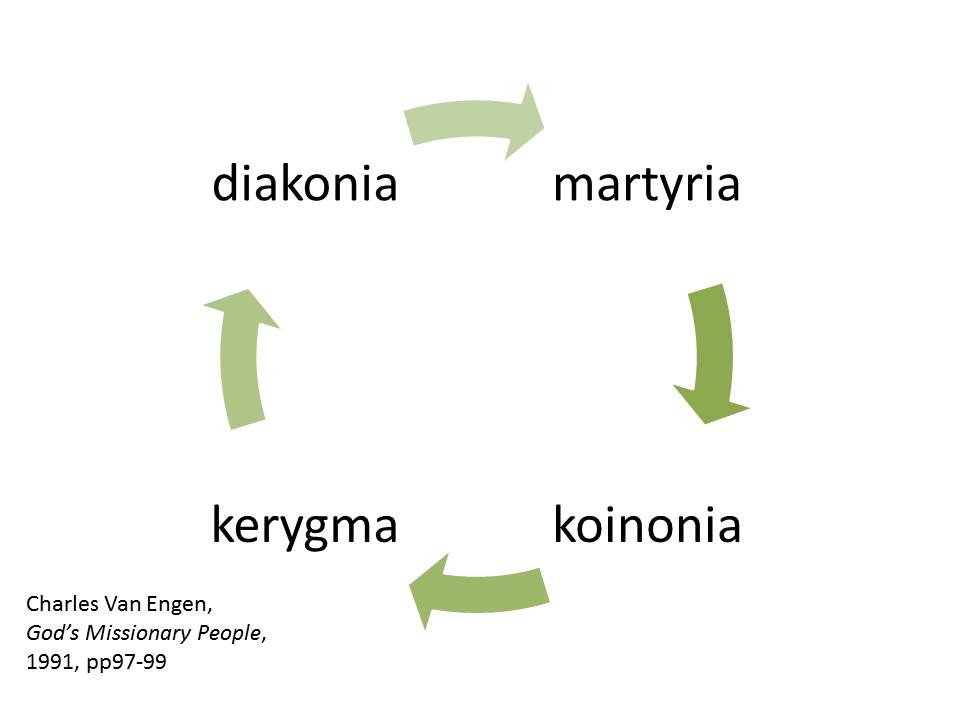|
The search for what really counts in church has been a personal journey. Prior to leaving for West Africa in 2002, I found several insights from the book Linked: The New Science of Networks by Albert-László Barabàsi. Since then it was recently reprinted. This work provides the mental scaffolding for dealing with complex relationships and the rapid growth of networks. While serving in West Africa, a Mennonite colleague shared another book that a supporter had sent to him by Ori Brafman and Rod Beckstrom. It became a centerpiece of weekly conversations among my little circle of missionary colleagues from four countries and six denominations. The spider and the starfish continued to be primary metaphors for reflection on the missionary work in which I was involved. An informal curriculum for multiplying churches began to unfurl through a growing list of reflective practitioners associated with a more organic, networked approach to multiplying churches, such as Roland Allen, David Garrison, Neil Cole, Michael Frost, and Alan Hirsch. Several of their works are found in my current course syllabi for ministry and intercultural studies majors at Mount Vernon Nazarene University where I now teach. In the mid-2000s, this crash course of new thinking was perfectly timed to an explosion of rapid multiplication in the church in Benin, my place of service at the time. The rapid change dramatically and radically transformed what was most important in evaluating the work of a church in the local context. The over-emphasis on who shows up when was replaced by how many groups have begun this week and where. I spent more time trying to facilitate the training of ministers than crunch numbers for local church. I spent more time developing materials in simple English and French so the material could be quickly translated into the dozens of local languages for discipling new converts. I focused most of my attention on the work of a team of four leaders instead of micro-managing every facet of this explosive growth which became much bigger than anything I'd yet encountered. It can be said that I was schooled in an Book of Acts approach to being the Church--miracles almost too fantastic to be true but too real to dismiss easily, powerful and large-scale response to simple tellings of the Gospel, traumatic and continual crises inside and outside the church, consistent testimony to the work of the Holy Spirit against all odds in the human realm. Recent engagement with organic church network leaders and district leaders within the Church of the Nazarene, especially through the Nazarene Organic Church Network, have now culminated in my thinking about a new way of evaluating the missional impact of the local church in a given context. Instead of counting individual adherents, members or attendees, the church should begin counting circles. But, first things first.
Each of these tasks take place in the midst of the church’s regular process of gathering and scattering (cf. Acts 2:42-47). Seldom does a Christian believer venture completely alone into the world. These disciples are sent by fellow co-workers, are joined by them, or are covered in prayer by them. The in-gathering of the church also provides the place for increasing the capability and capacity for continual witness and service. Continual feeding needs an outlet for pent-up spiritual energy, so also the people's witness and service must spiral outward into the surrounding community.  The fellowship, however, is never broken though it may be multiplied. The gospel is heard together, experienced, validated, and sent with each believer as they fulfill each purpose of the gathered church by scattering outwardly. Visually, these actions can be depicted as a spiraling circle, such as that found in the triskelion found in the prehistoric ruins at Newgrange, Ireland, and later used in one of the high points of Celtic art depicted in the monastic Book of Kells. So, why should the church continue to count individual participants as the sole means of evaluating church when it barely gets to the heart of the church’s total missional impact? Individual believers cannot send themselves, go by themselves or last very long on their own. They are only sent as communal participants, cognizant of their connection to the community. Wouldn’t it be better to count the intimate circle, the gathered and sacramental body, to which the believer belongs and from which he or she is sent into the world? Does this not reflect the intentional tasks to which the disciple, and thus the church, is called to be and do, to become and to accomplish? If so, what circles in the fellowship of believers should then be counted? These questions will be the focus of the next installment of evaluating the missional impact of the church. Next, Circles of Missional Impact, Part 5 in blog series on Evaluating the Missional Impact of the Church: Part 1 - What Really Counts? / Part 2 - Nickels & Noses / Part 3 - On a Mission from God
0 Comments
Leave a Reply. |
Bio
teacher, writer, Archives
August 2022
Categories
All
|




 RSS Feed
RSS Feed